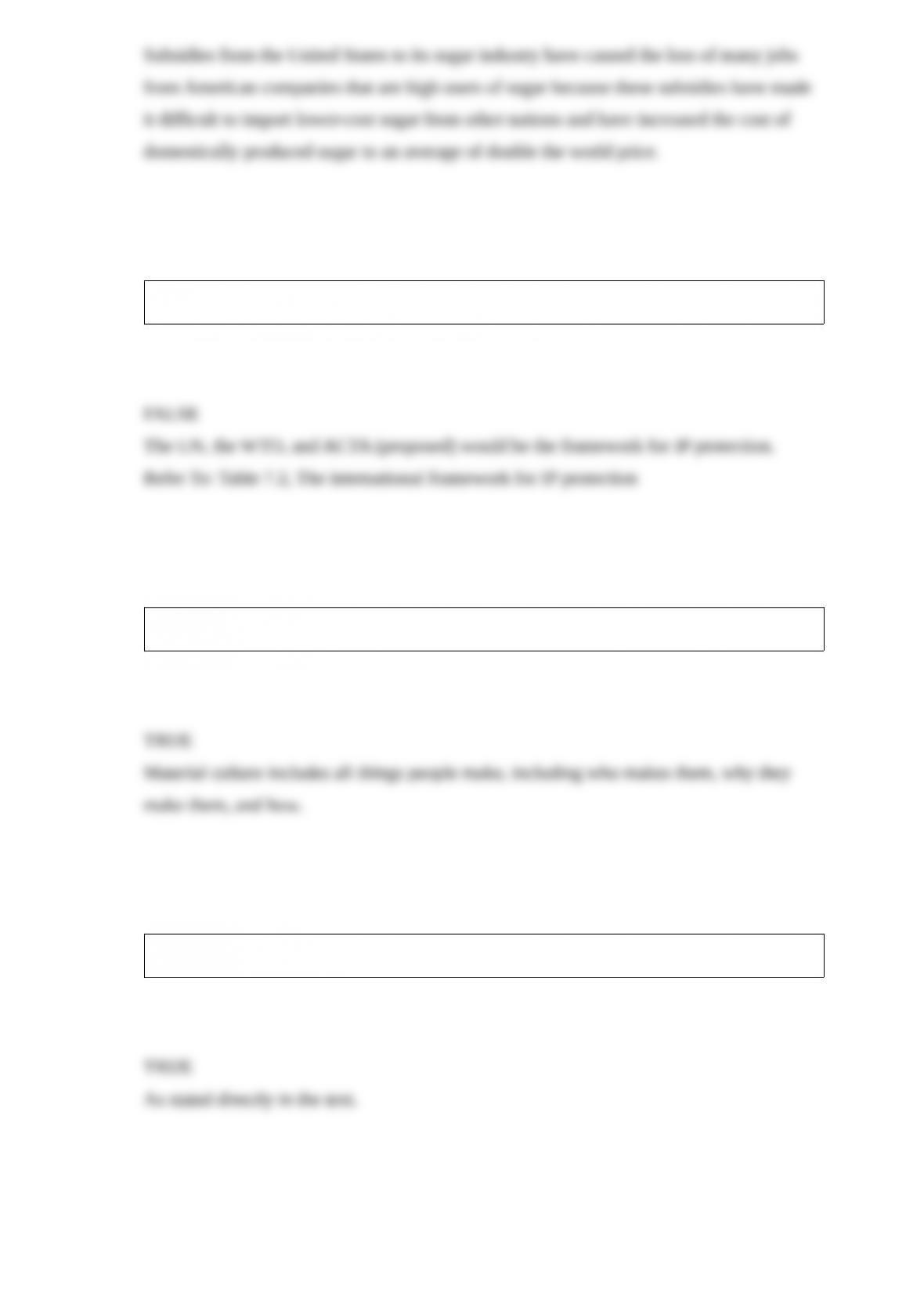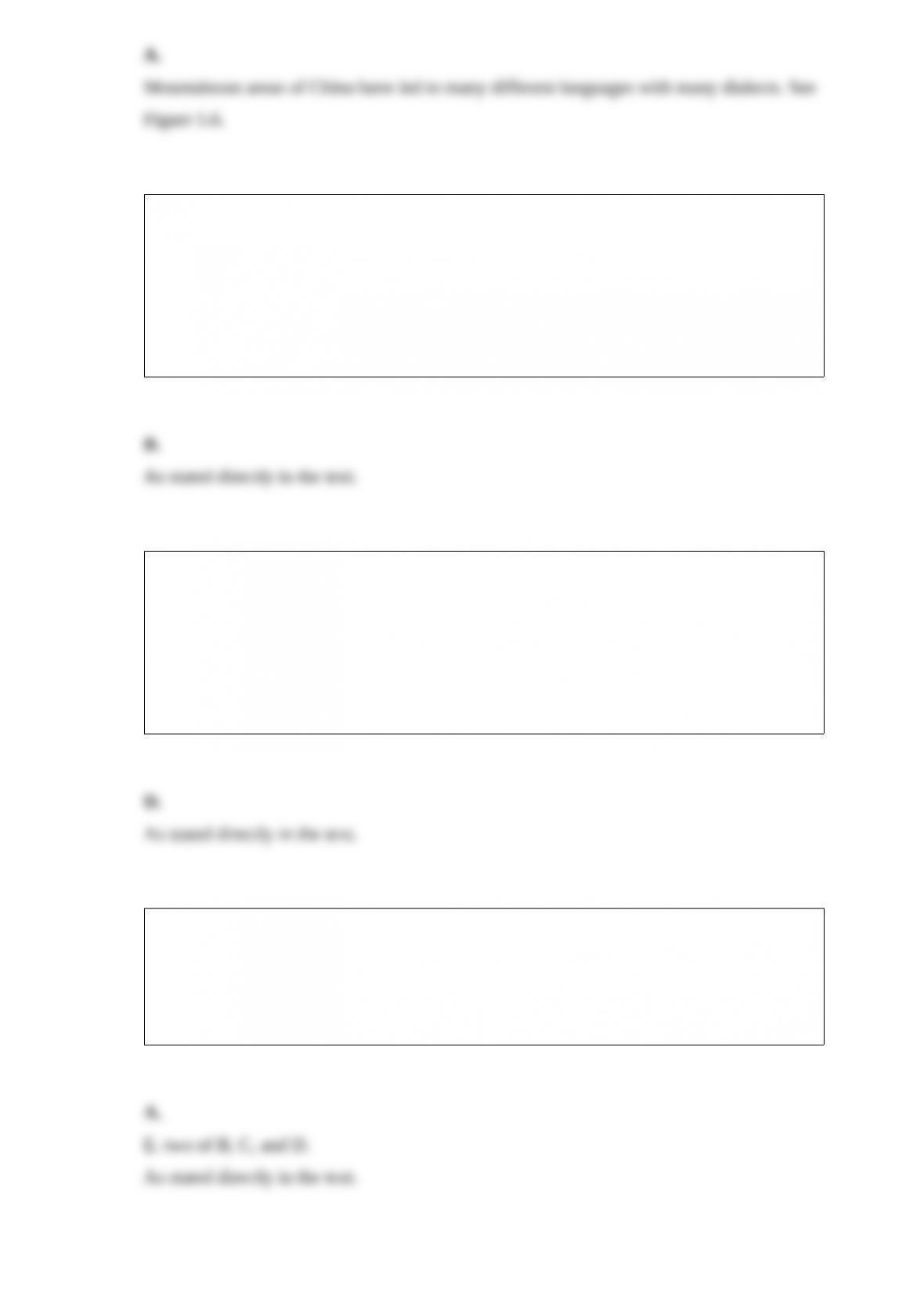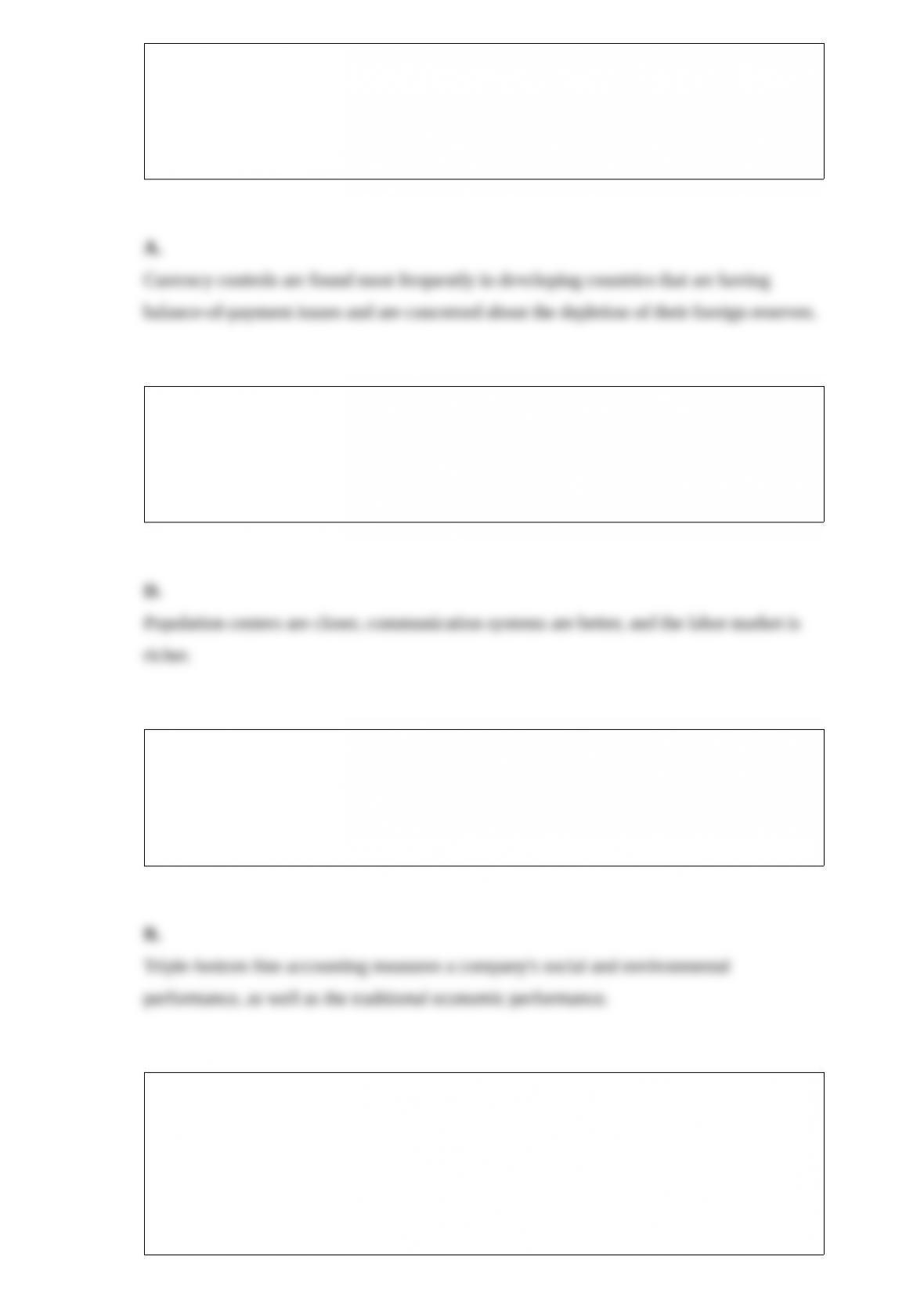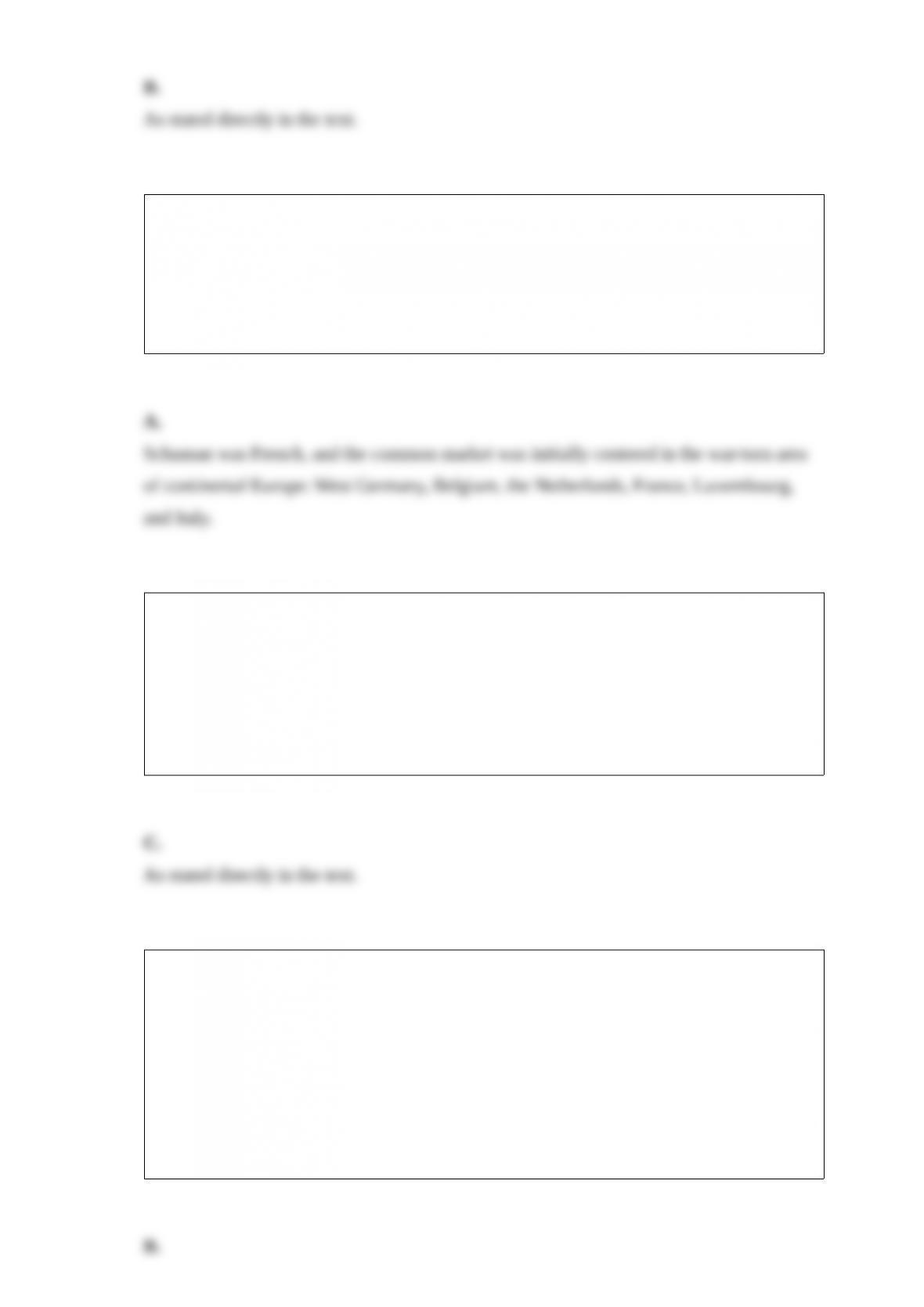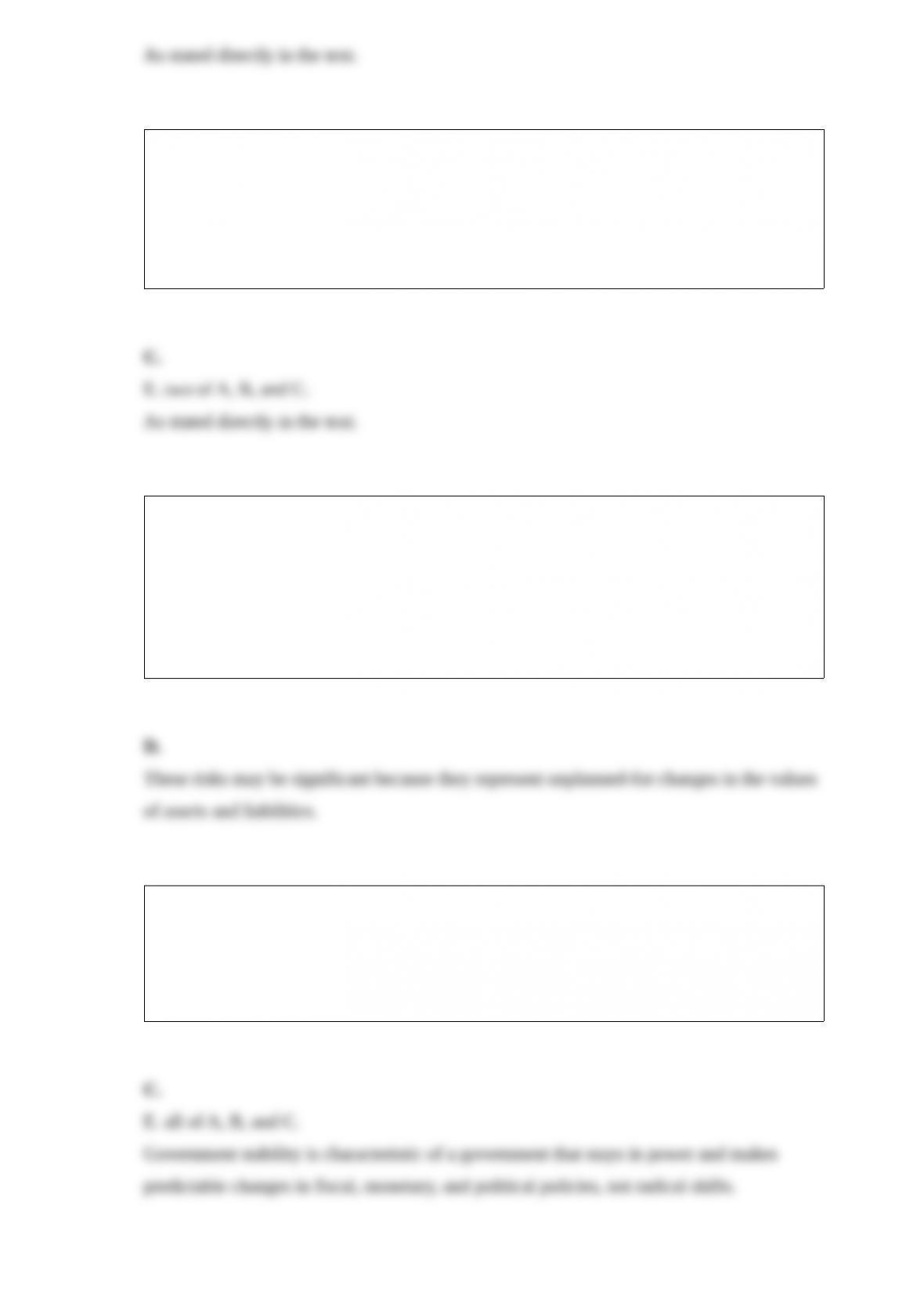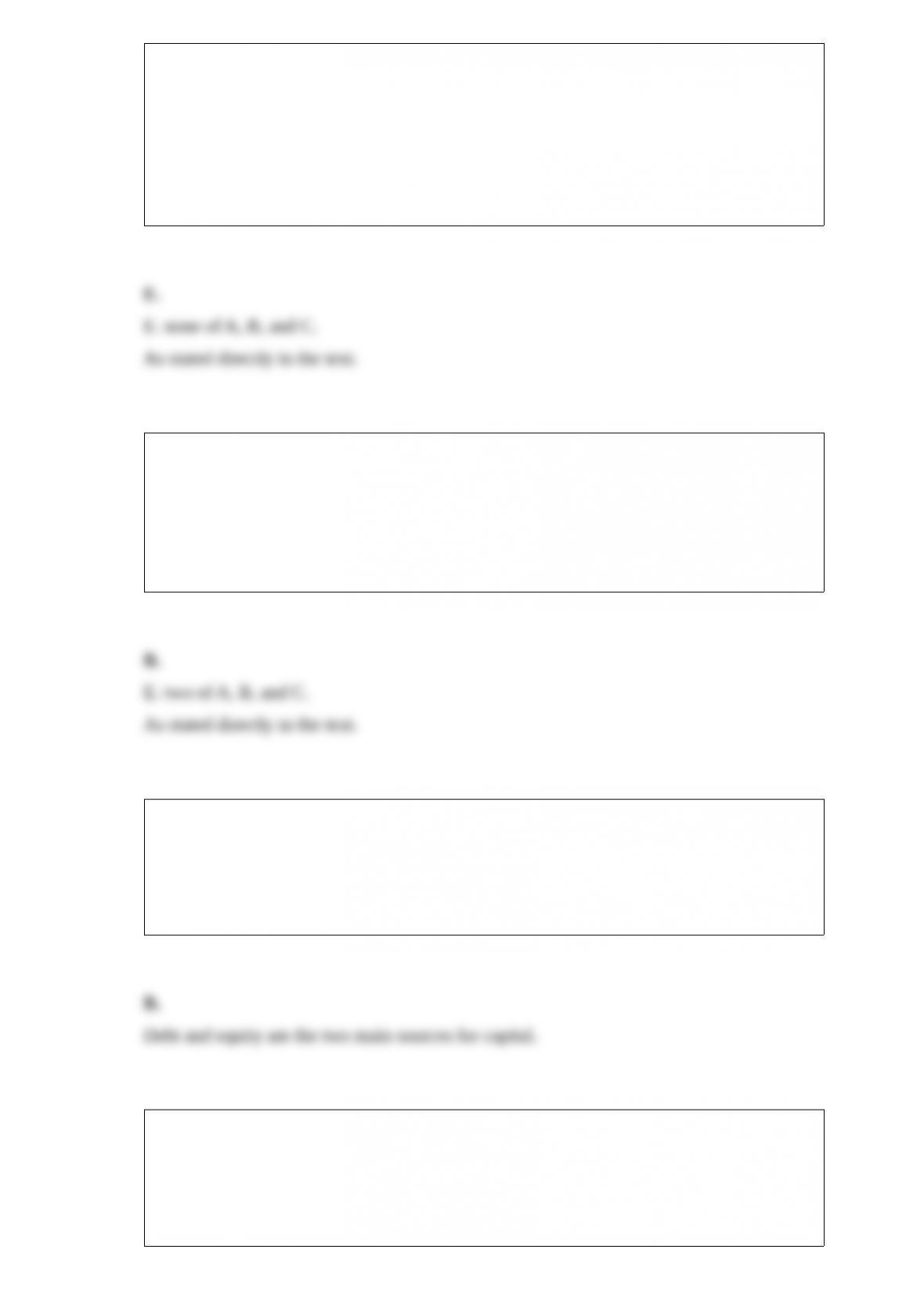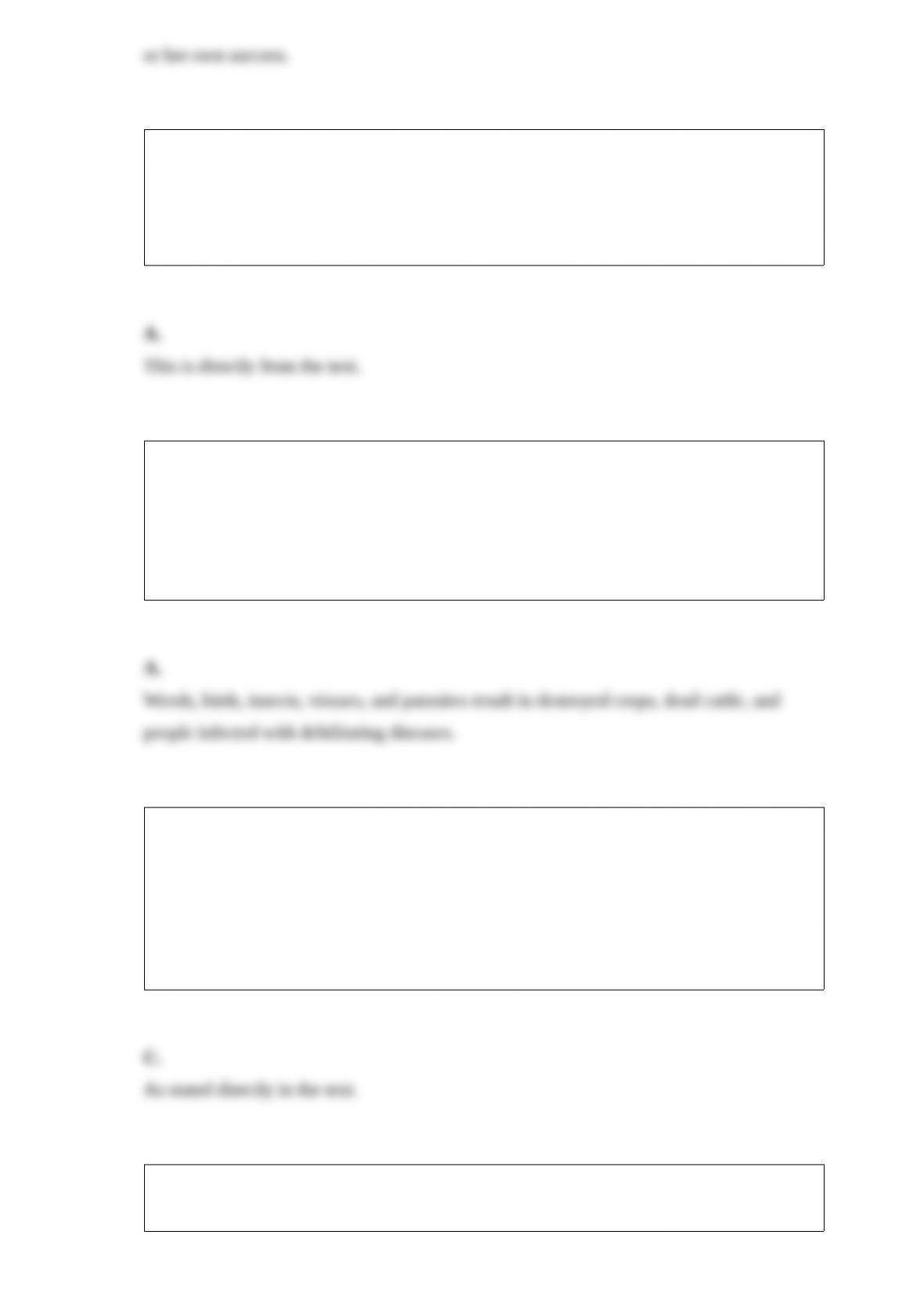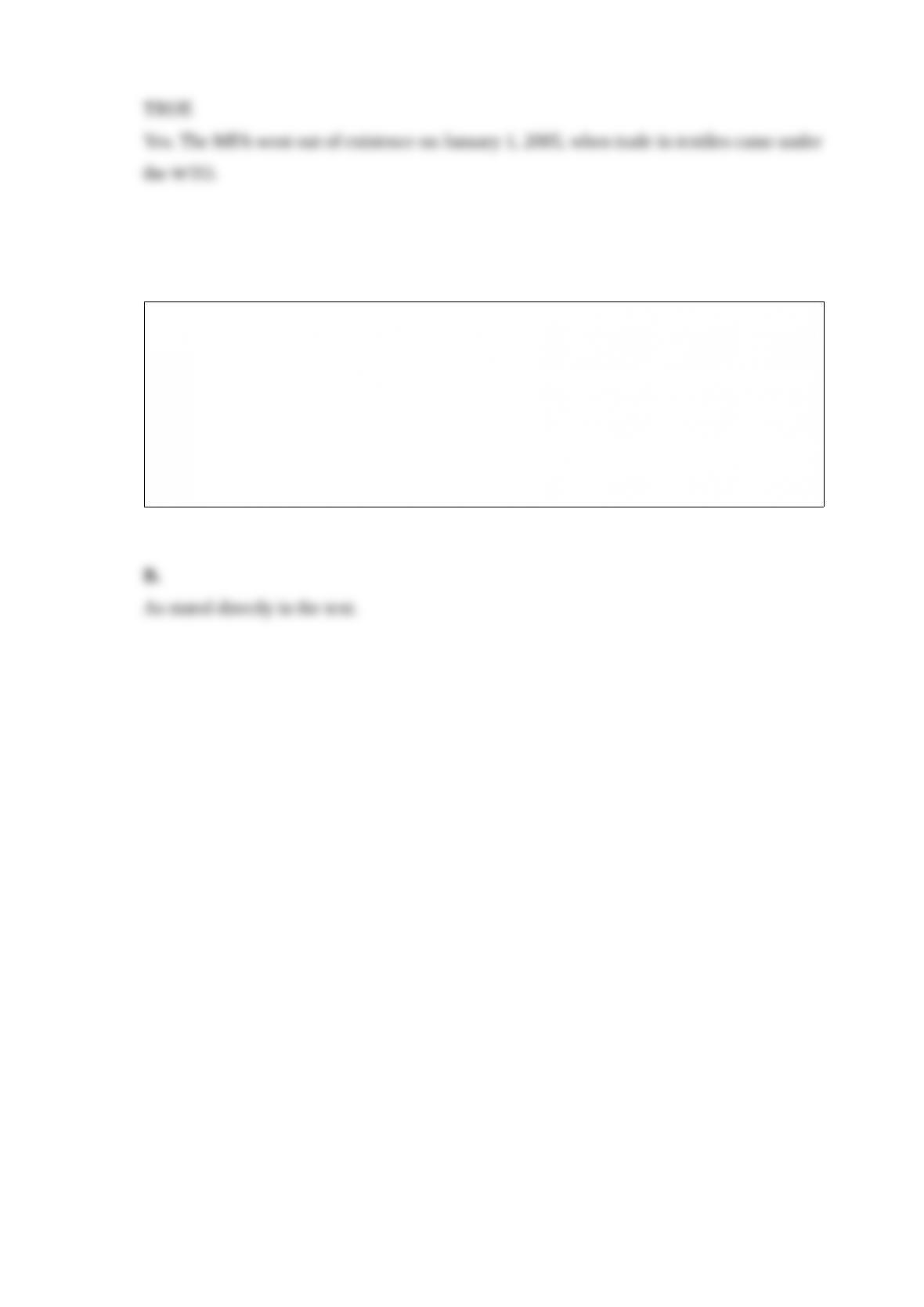The Treaty of Rome, signed in 1957, established a common market for coal and steel
for:
A. West Germany, Belgium, the Netherlands, France, Luxembourg, and Italy.
B. England, Ireland, Northern Ireland, Scotland, Wales, and France.
C. Finland, Sweden, Norway, West Germany, Denmark, and Switzerland.
D. Austria, Hungary, Slovakia, Poland, Romania, and Bulgaria.
When a company faces strong pressures for both reducing costs and adapting products
for local markets, it should tend to use a:
A. global strategy.
B. multidomestic strategy.
C. transnational strategy.
D. differentiation strategy.
E. home replication strategy.
The theory of resource endowment:
A. explains why France exports cosmetics, wine, commercial aircraft, and clothing.
B. states that a nation will trade goods that can be produced with the production factor
that is most abundant.
C. explains why an automobile can be made either by hand or by a capital-intensive
process.
D. explains why transportation costs may be ignored when calculating the costs of
imports.
E. none of the above.



